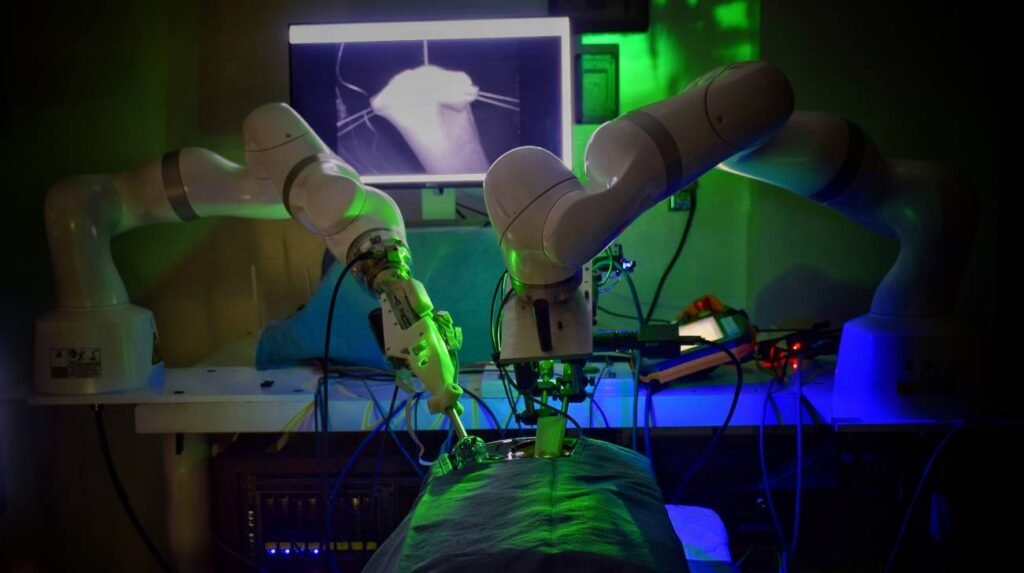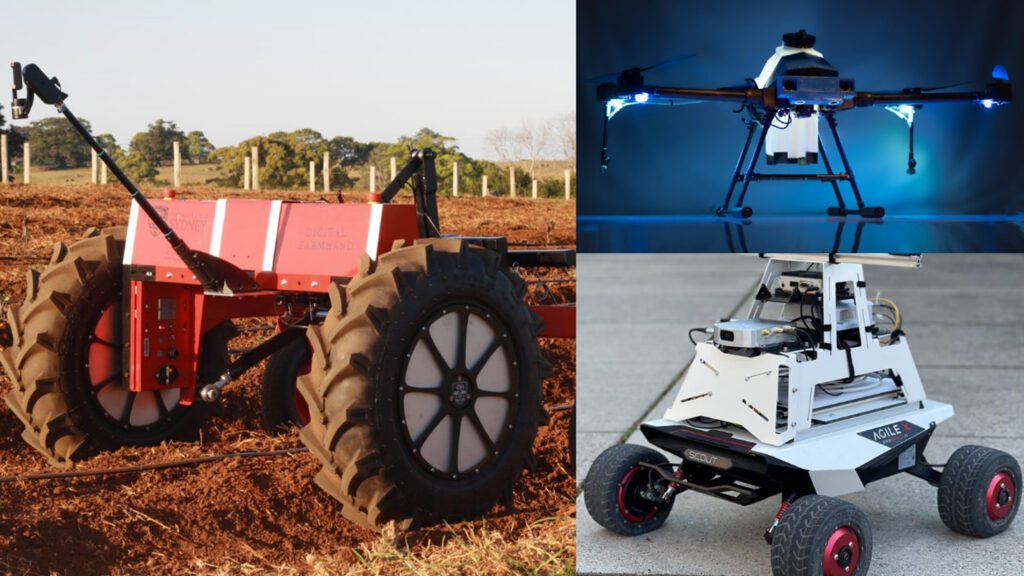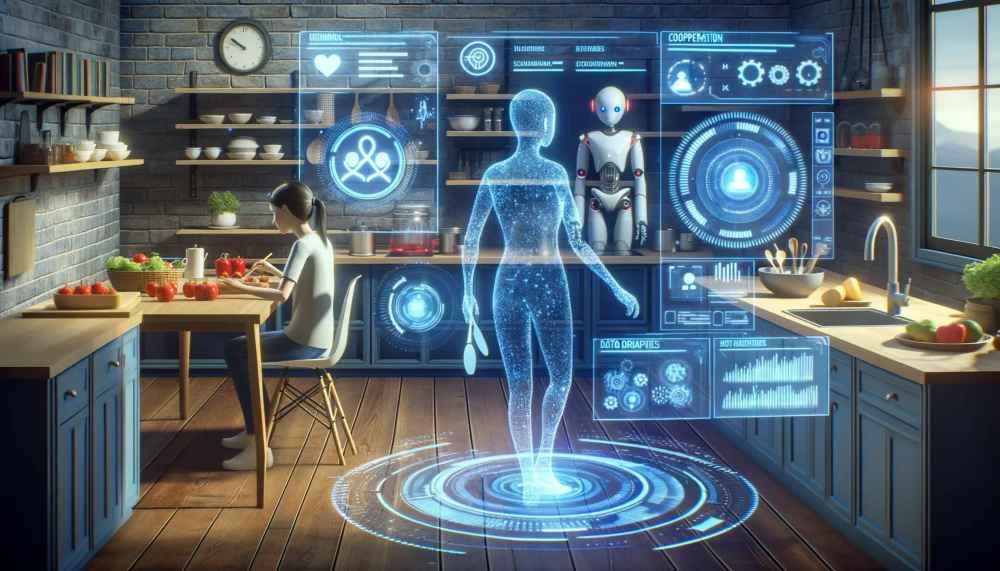Robots created by a team to support human living in space
NASA intends to construct a space station in lunar orbit, send human crews back to the moon, create a permanent facility on the lunar surface, and—ideally—transport people to Mars in the upcoming decades.
What may go wrong, if anything?
No, really, how would we repair it and what could possibly go wrong? As part of a research initiative to construct robust and autonomous deep space and extraterrestrial habitations, a group of researchers from the Harvard John A. Paulson School of Engineering and Applied Sciences (SEAS) have been pursuing that same topic for the past four years.
Purdue University, in collaboration with SEAS, the University of Connecticut, and the University of Texas at San Antonio, is the leader of the Resilient ExtraTerrestrial Habitats Institute (RETHi).The organization’s goal.

The team at SEAS led by Senior Research Fellow in Robotics Justin Werfel is in charge of creating the technology that will enable autonomous robots to replace or repair damaged parts of a habitat.
Alternatively, the astronauts can be distracted by other emergencies if it happens during a crewed time. Similarly, in more mundane circumstances, several ordinary maintenance chores—such as cleaning and filter replacement—take up important astronaut time. The habitat should be able to manage as much as feasible on its own, which entails robots carrying out that labor.”
Robert Wood, the Harry Lewis and Marlyn McGrath Professor of Engineering and Applied Sciences at SEAS, and Werfel’s team have been working on this project since 2019. Together, they have created new robotic grippers and arms, enhanced human-robot collaboration systems, and innovative approaches to designing robot-friendly machinery.
Multipurpose implements

A major obstacle in the design of robots for these so-called SmartHabs is the multifunctionality required for living in deep space. The majority of industrial robots, such those that assemble automobiles or stock warehouses, are extremely specialized and limited in what they can do. However, dozens of specialized robots won’t have enough area in deep space homes. Rather, a single or small number of multipurpose robots will have to be capable of carrying out a wide range of duties, including last-minute repairs.
The creation of multi-mode grippers—which can alter their form to grab various items in various ways—has been one project aimed at achieving this goal.
Werfel and colleagues—including those from Pusan National University in South Korea and the Harvard Graduate School of Design (HGSD)—developed a gripper with fingers made of so-called scissor links, which can be rearranged to alter the number of joints in a finger. Their work was published in an IEEE paper.
Three modes exist for this gripper. In the first, the fingers are able to hold items firmly and securely because they are short and do not flex. In order to enable in-hand manipulation, or the gripper to move and rotate items without releasing go of them, the fingers acquire a joint in the second mode. The final mode adds two extra joints, which makes it possible for the fingers to disperse contact pressure and passively adjust to the contour of an object. This is helpful when handling fragile or irregularly shaped things.
Joonhaeng Lee and Chuck Hoberman of HGSD, Wood, David Bombara and Clark Teeple, graduate students in SEAS, and Junghan Kwon of Pusan National University co-authored this study.
Operating in a small area

The initial SmartHabs are probably going to be as small as a mobile home and loaded with technology. Although soft robots may bend to fit more readily into confined areas and can be safer to operate near people than traditional rigid ones, their softness also means that they may lack the strength necessary for certain of the tasks that they may be asked to perform.
The robotics team at RETHi created a soft robotic arm that can stiffen up to improve its force and payload capacity in order to meet that challenge.
Science Robotics published the research article.
A soft arm with two independently controlled portions was created by the all-SEAS team, which also comprised Wood, Teeple, graduate student Moritz Graule, and former undergraduate and postdoctoral fellow at SEAS Daniel Bruder.
The soft joints that make up each segment have a limited range of motion on their own, but when combined, they can bend the arm 90 degrees. A small number of actuators positioned at the joints and along the spine can provide localized body stiffness, enabling the arm to move or lift a heavy item.
Moving big, heavy equipment like satellite dishes and solar panels is one duty that will require teamwork. Werfel and Nicole Carey, a former postdoctoral researcher at SEAS, created a method for autonomous robots to follow human instruction without needing to know the specifics of the job or objective, merely by sensing force applied to an item. This made it easier for astronauts to seek assistance from robots on certain activities.
Without specifically telling the robots what they wanted, an astronaut might, for instance, place their hand on a solar panel and direct the robots in the proper direction if they required assistance moving it.
A environment that is robot-friendly

One of the long-term objectives of robotics is to create robots that can do activities intended for people, but this will require a lot of effort and time to accomplish. Is it possible to build equipment with robots in mind and so enable present robots to assist earlier?
Werfel and the RETHi robotics team are investigating that as an additional option.
Werfel, Teeple, and former SEAS postdoctoral associate Nathan Melenbrink outlined methods for creating robot-friendly hardware in a 2022 paper. These methods included reducing complex operations to simpler mechanisms and limiting necessary motions to a single axis.
To make it simpler for robots to fix certain crucial components of equipment, such as a water filter component, the team rebuilt them.
The SEAS robotics team will test their technologies as RETHi approaches the last year of its funding in a combined virtual and physical simulation of the scenario of mending a hole made by a meteorite impact.
Werfel stated. More alternatives for what their systems can manage, more accurate cost estimates for when problems arise in highly linked systems with intricate relationships, and more ability to create habitats that can withstand any misfortunes they encounter are the objectives. Human flight into deep space will become a reality when our technology is able to address difficulties as they emerge, since missions won’t be able to completely avoid them.”

